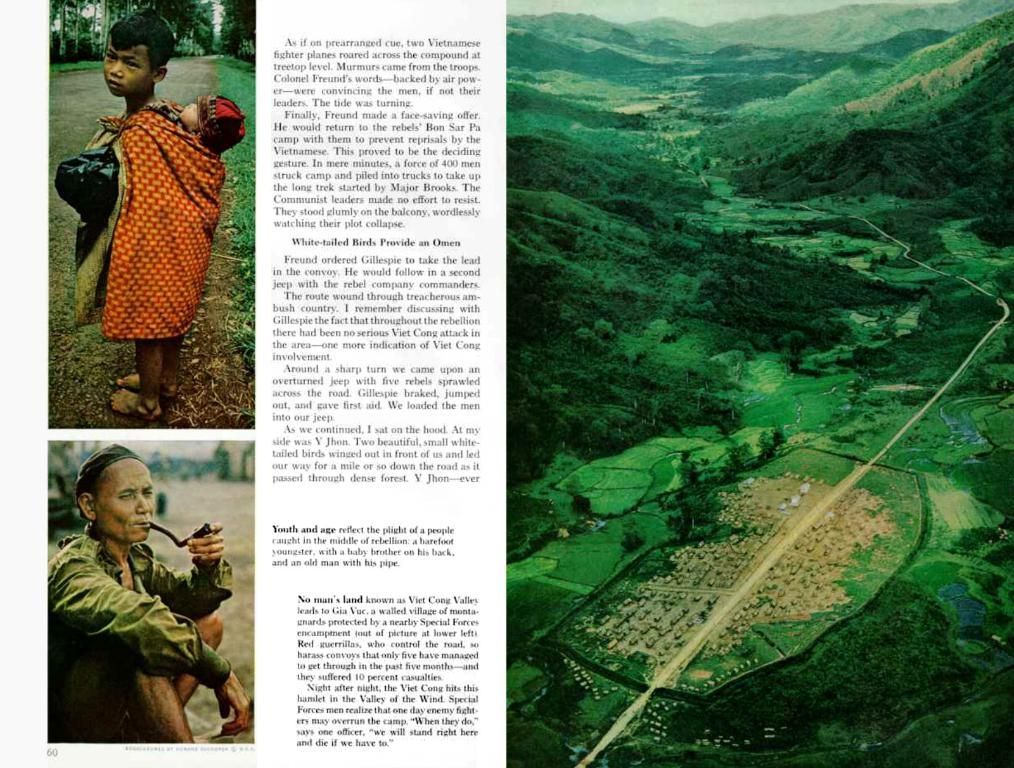Exploring the Time-Travel Mechanism of the Mesoamerican Calendar: A Sojourn Across Timelines
Step into the ancient realms of Mesoamerica, where the Maya and Aztecs reigned supreme in their astronomical, mathematical, and spiritual prowess. This blog delves into the intricate calendars of these civilizations, revealing a captivating blend of astronomy, religion, and tradition that echoes in modern culture.
The Mesoamerican Calendar System: A Different Time
The Mesoamerican calendar, sharply contrasting from the modern Gregorian system, combined essential solar and ritual cycles. Beyond mere timekeeping, its intricate design mirrored a vibrant tapestry of astronomy, religious beliefs, divination, and agricultural cycles, all intricately bound to mythology.
One breathtaking aspect of this system was its cyclical perspective of time. To the Mesoamericans, time was a repetitive series of cycles, with each period influenced by gods and cosmic forces. The calendar system, with a base-20 (vigesimal) structure, could track both short-term cycles like days and years and long-term cosmic cycles spanning thousands of years.
- Suggested Reading: Mayan Mythology: A Journey through the Ancient Civilization The Mayan Pantheon: Exploring the Deities of an Ancient Civilization
The Complexity of the Maya Calendar System
The Maya civilization was revered for its elaborate and comprehensive calendar, imbued with much more than simple timekeeping. Enmeshed with their religious beliefs and worldview, the Maya calendar played a significant role in their rituals and ceremonies.
The Tzolk'in (Sacred Calendar)
The Maya's sacred calendar, the Tzolk'in, consisted of 260 days divided into 20 periods of 13 days each. This sacred calendar was crucial for religious and ceremonial purposes, aiding in marking essential events and choosing the optimum timing for rituals. Each day boasted a unique combination of a number and a named day, each with deep spiritual meaning. Maya priests utilized the Tzolk'in in divination to interpret celestial events and discern the will of the gods. Even today, certain modern-day Guatemalan indigenous groups maintain this ancient tradition.
The Haab (Solar Calendar)
The Maya's solar calendar, the Haab, comprised 365 days divided into 18 months of 20 days each, with an additional five days known as the Wayeb. These days were viewed as unfavorable, as people believed the boundary between the ethereal and real worlds was weaker during this period. This solar calendar was vital for agriculture, allowing the Maya to know when to plant and harvest crops effectively. Scholars have found that the Haab's accuracy in tracking the solar year was comparable to the modern Gregorian calendar, showcasing the Maya's advanced understanding of astronomy.
The Calendar Round
The Maya united the Tzolk'in and Haab calendars to form what's known as the Calendar Round, a cycle lasting 52 years. After the termination of each cycle, Maya ceremonies were performed to ensure the world continued for another cycle. The Calendar Round played a vital role in Maya ceremonial life and carried immense cultural and spiritual significance.
The Aztec Calendar System
Much like the Maya, the Aztecs developed a sophisticated calendar system fundamental to their culture and religion. They employed two main calendars, the Tonalamatl and the Xiuhpohualli:
The Tonalamatl (Divinatory Calendar)
The Tonalamatl resembled the Maya's Tzolk'in, serving as a 260-day divinatory calendar. Aztec priests consulted this calendar during religious ceremonies, choosing favorable dates for significant events such as births, marriages, and even military campaigns.
The Xiuhpohualli (Solar Calendar)
The Xiuhpohualli was the Aztec's solar calendar, containing 365 days, divided into 18 months of 20 days, with an additional five days at the end. This calendar was essential for agriculture and religious festivals. Each month honored a specific deity and marked the festivities aligning with the Aztec agricultural cycle.
- Suggested Reading: The Mesopotamian Pantheon: A Journey into Ancient Deities The Rise and Fall: A Journey Through Babylonian Empire Timeline
The Influence of the Mesoamerican Calendar System
The Mesoamerican calendar system played a pivotal role in the lives of civilizations like the Maya and Aztecs, shaping their astronomy, mythology, religion, and aspects of modern-day culture.
Impact on Astronomy
The Mesoamerican calendars transcended ordinary timekeeping. By meticulously observing the stars and planets, the Maya and Aztecs could predict solar and lunar eclipses, solstices, and equinoxes. Their astronomical understanding was revolutionary for their time, as acknowledged in several studies. The alignment of their temples and pyramids with significant celestial events highlighted the deep knowledge of the cosmos that the Mesoamerican civilization possessed.
Influence on Mythology and Religion
Mythology and religion were intricately woven into the Mesoamerican calendars. The people believed that gods controlled the cycles of time, and each day or year bore the influence of specific deities. Significant periods, such as the end of a Calendar Round or the 'unlucky' Wayeb days, carried spiritual importance and were marked by elaborate religious ceremonies.
Legacy in Modern-day Culture
The impact of the Mesoamerican calendar system persists today, lending its influence to modern culture, religion, and even global fascination with ancient timekeeping systems.
Indigenous groups in Mexico and Central America still observe traditional practices linked to these calendars, keeping alive this ancient heritage. The famous Aztec calendar stone, known as the Sun Stone, remains a lasting symbol of Mexico's rich cultural heritage.
During the 2012 phenomenon, attention was drawn to the Maya calendar, with many believing it predicted the end of the world in 2012. Scholars clarified that it merely marked the end of one cycle and the beginning of another, not an apocalypse.
Final Thoughts
The sophistication of the Maya and Aztec calendar systems is unparalleled. From the Maya's precise astronomical calculations to the Aztecs' intricate religious festivals, these calendars served as crucial cornerstones in shaping these civilizations. Today, their legacy continues to influence our culture, religion, and global admiration for ancient timekeeping systems.
- Share on Facebook
- Tweet
- Follow us
- Save
- Enrichment Data:
- Overall: The Maya and Aztec calendar systems exemplify some of the most remarkable and complex timekeeping methods ever developed. Each has distinctive characteristics that reflect their cultural, astronomical, and religious beliefs, leaving an indelible mark on modern society.
- Unique Characteristics of the Maya Calendar System
- Complexity: The Maya calendar is renowned for its complexity, containing three primary components:
- Tzolk'in: A 260-day cycle used for divination and spiritual purposes.
- Haab: A 365-day solar year.
- Long Count: Measures time using 20 cycles: baktun, katun, tun, uinal, and kin. This system traces time from an established starting point, referred to as the creation date of August 11, 3114 BCE.
- Astronomical Observations: The Maya were renowned for their precise astronomical observations. They could track celestial events like solar and lunar eclipses, planetary movements, and precise solar and lunar cycles.
- Unique Characteristics of the Aztec Calendar System
- Adaptation: The Aztecs adapted and elaborated the Maya calendar system but also developed distinct features.
- Xiuhpohualli: A 365-day solar year similar to the Haab.
- Tonalpohualli: A 260-day cycle like the Tzolk'in, employed for divination.
- Pictorial Writing: The Aztecs used pictorial writing to record historical events, myths, and calendars in their codices.
- Influence on Astronomy
- Precise Measurements: Both the Maya and Aztec calendars authenticate the advanced astronomical knowledge of these civilizations, with precise measurements of solar years and lunar cycles.
- Cultural Significance: The study of these calendars underscores the importance of astronomy in Mesoamerican cultures, influencing their religious and daily life practices.
- Influence on Religion
- Cosmological Beliefs: The calendars represent the cosmological beliefs underlying these civilizations, with time being firmly intertwined with religious rituals and ceremonies.
- Divination and Ritual: Both calendars were employed for divination purposes, aiding in discerning the will of the gods and guiding religious practices and ceremonial activities throughout the year.
- Legacy
- Cultural Identity: The Maya and Aztec calendars persist as symbols of cultural identity and heritage in modern Mesoamerica.
- Ongoing Use: Many communities still observe traditional practices linked to these calendars, demonstrating their enduring cultural significance.
- Influence on Modern Culture: The impact of these calendars is evident in modern art, literature, and cultural practices, signifying their timeless appeal and significance.
The Mesoamerican calendars, especially the Maya's Tzolk'in and Haab, and the Aztecs' Tonalamatl and Xiuhpohualli, were not only about keeping time but also a reflection of their profound astronomy, religion, and spiritual beliefs. These complex systems, which combined divination, agricultural cycles, and mythology, continue to influence various aspects of modern-day culture, and are showcased through ongoing practices by indigenous groups, the renowned Aztec calendar stone, and even capturing global attention during phenomenons like the 2012 Maya calendar speculations.
In the realm of education-and-self-development and learning, studying these ancient calendars offers insight into the focus areas and values of the Maya and Aztec civilizations, providing a deeper understanding of their astronomical, religious, and cultural practices that have shaped the world.






